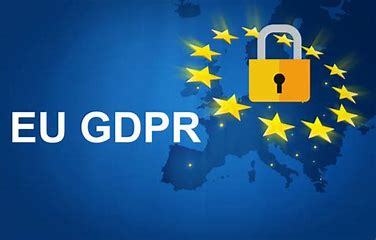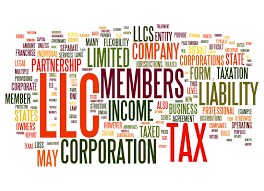What is it and why’s it so important?
Force majeure literally means “superior force”. This term is derived from French law and refers to an event or effect that cannot be reasonably anticipated or controlled. When used correctly, a force majeure clause in a commercial contract can provide a party (or both parties) with a legal defense to not performing their contractual obligations (or suspending performance until a later time).

The current pandemic has brought to the forefront of business leaders throughout the country and throughout the globe, with businesses forced to close and supply chains interrupted, the critical importance of limiting serious consequences of situations like the current governmental shut-downs across the globe. All of which are literally beyond their control. Whenever there’s been wide-spread commercial loss or business interruption, such as Sept. 11th, the devastation caused by Hurricane Katrina and now with the entire world facing a global pandemic having the right tools at your disposal is critical to every business’ survival.
What’s in a force majeure clause (or not) is very important. Many of these clauses will define the events the parties agree fall under the “umbrella” of a force majeure event allowing a party to completely terminate performance, cancel a contract or suspend performance to a later time. Uncontrollable events such as wars, labor stoppages, extreme weather, including hurricanes, tornadoes, volcanic eruptions, often referred to “Acts of God”, condemnations or similar governmental declarations such as states of emergency making performance impossible are among events commonly included in force majeure provisions. Most commercial contracts contain these important provisions (all contracts should) but sometimes these provisions are too general or so specific they can cause parties wishing to enforce them with unnecessary problems, or in some instances this important provision is completely overlooked and not included in the contract.
When these provisions have been carefully drafted, it can maximize the protections afforded parties, in effect, legally excusing a party’s performance due to unexpected events beyond that party’s control. (I point out that these provisions do not apply when a party has been negligent or lacked good faith in performing its commercial obligations – meaning what a party has the capacity to perform it’s required to perform (within the bounds of “commercially reasonable” is often the test) and when performance has been made impossible (or is not commercially reasonable causing a party exorbitant additional costs for example) due to elements beyond its control – what’s in the contract, the specific contract language, becomes critically important. If the provision is too general or does not include certain “events”, it could pose a big stumbling blocks for the parties down the road facing an issue such as the current pandemic. Whether a party would be successful in utilizing such a clause depends on several things, starting with the specific language in the contract, and then the applicable law – what governing law applies to the contract, what are the specifics of the contract deliverables, etc.? Business insurance due to business interruption may be also be an available resource, but depends on what’s covered or excluded from the policies – review policy provisions with care.
There are also several other potential remedies a party may be able to utilize in current contracts that have limited or no force majeure provision, when performance is impossible due to circumstances beyond their control. In some instances, a party may have other relief available under the U.C.C. (Uniform Commercial Code), international codes of conduct, or other laws, to the extent those laws may apply to the particular transaction. Our firm has had a high rate of success over the past few months terminating contracts or suspending contract performance through our negotiations resulting in clients receiving back deposits paid on commercial real estate development deals, re-negotiating lease terms and successfully revising or terminating other commercial contracts.

Parties to commercial contracts will always be best served by customizing these critically-important force majeure clauses (as well as the other critical contract provisions) to reflect the risks, circumstances and specifics of the business transaction and specific industries involved. We’re encouraging all businesses to review, and update, with the assistance of experienced business counsel, all currently-used standard commercial contracts, as well as more complex, customized commercial contracts to ensure the best possible protections and outcomes can be achieved in all on-going ventures and new contracts.

We welcome your inquires on how we can assist.


 He had had it. He demanded to be bought out for the exact amount, down to the penny, of what half the business, property, contracts, company trucks and cars, goodwill were worth. His attorney would be in contact later in the day.
He had had it. He demanded to be bought out for the exact amount, down to the penny, of what half the business, property, contracts, company trucks and cars, goodwill were worth. His attorney would be in contact later in the day. The best time to plan for the future, and have smooth transactions for preserving wealth, is at the start of the venture, not in the middle of a crisis. And the companies with good exit plans and buy-out strategies in place for before they need one is what often distinguishes the successful long-term ventures from the others.
The best time to plan for the future, and have smooth transactions for preserving wealth, is at the start of the venture, not in the middle of a crisis. And the companies with good exit plans and buy-out strategies in place for before they need one is what often distinguishes the successful long-term ventures from the others.

 While this blog isn’t intended as a definitive answer-all to cybersecurity, there are a few common-sense rules every internet user should keep in mind to avoid the most common pitfalls when online. Take a minute before you open it. Keep security programs and patches up to date. Use encryption, secure password logons and phrases and multi-factor authorization, whenever possible, and change them regularly. Public or shared Wi-Fi should be avoided. For businesses, training everyone in your organization on best practices to protect the privacy and security of your network and customers is not only a great idea, many times it’s a regulatory mandate. Most of these problems occur because of a poor understanding of how computers work or good computer hygiene, not understanding how attacks occur, not knowing or understanding the ethical or regulatory rules, visiting a site that’s infected or opening a link that well, was probably obvious, but someone hadn’t taken a moment to stop and question the source, before opening. All too often, if someone had taken a moment to stop and think, before clicking, the problem could have been avoided.
While this blog isn’t intended as a definitive answer-all to cybersecurity, there are a few common-sense rules every internet user should keep in mind to avoid the most common pitfalls when online. Take a minute before you open it. Keep security programs and patches up to date. Use encryption, secure password logons and phrases and multi-factor authorization, whenever possible, and change them regularly. Public or shared Wi-Fi should be avoided. For businesses, training everyone in your organization on best practices to protect the privacy and security of your network and customers is not only a great idea, many times it’s a regulatory mandate. Most of these problems occur because of a poor understanding of how computers work or good computer hygiene, not understanding how attacks occur, not knowing or understanding the ethical or regulatory rules, visiting a site that’s infected or opening a link that well, was probably obvious, but someone hadn’t taken a moment to stop and question the source, before opening. All too often, if someone had taken a moment to stop and think, before clicking, the problem could have been avoided.



 The Act itself is rather lengthy, but new, major provisions include:
The Act itself is rather lengthy, but new, major provisions include: We recommend new businesses consider LLCs for the flexibility and increased clarity available under the new law; and that existing LLC governing documents be reviewed, by well-qualified business counsel. We welcome your inquiries on how we can help with this or other general business law topics.
We recommend new businesses consider LLCs for the flexibility and increased clarity available under the new law; and that existing LLC governing documents be reviewed, by well-qualified business counsel. We welcome your inquiries on how we can help with this or other general business law topics.



